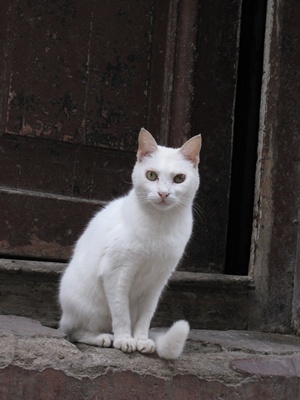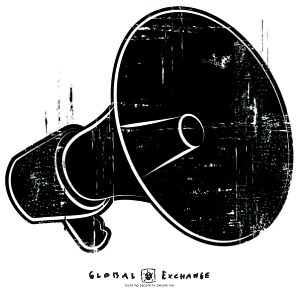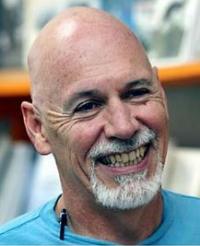
Cuban kitty has her eyes on you
*See below under “Take Action” for update added on 1/18/2012.
Walking along the bustling streets of Havana, you hear a tiny cry. It’s repeated. You look down to see a tiny yellow kitten with newly opened eyes staring up. As the animal focuses on you, its pitiful meows become more insistent…..it needs you.
Though Cuba provides full health care free-of-charge to its citizens and low cost pet assistance, the situation of stray cats and dogs has gotten out of control in recent years due to hard economic times and perhaps a strong dose of “machismo” which keeps some animal owners from neutering their pets.

Human and feline Cubans
Cuban veterinarians and animal lovers are working hard to do something about the very visible and heartbreaking problem. Joining them are their colleagues and supporters from other countries. Emma Clifford of the US group Animal Balance is working with a Canadian group to support a project to neuter stray cats in the highly populated “Old Havana” neighborhood.
Emma Clifford, Founder and Director of Animal Balance shares her story in this Global Exchange exclusive:
—
Caring for Cuba’s Cats

Cuban woman with cat is all smiles
Cuba’s cat and dog populations have a champion in Terry Shewchuk of the Canadian organization The Spanky Project. Like most countries, the Cuban cats and dogs have done a great job at finding food and increasing their populations, alongside the increasing number of humans.
Terry recognized that the animals and communities where they live needed some help so he formed The Spanky Project, named after his beloved dog. That was 8 years ago, and now Terry is working with Cuban NGOs Sociedad Patrimonio, Comunidad y Medio Ambiente and Consejo Cientifico Veterinario de Cuba to organize free sterilization and deparatization (treatment for parasites) programs for the animals.

Emma Clifford (front) and Terry Shewchuk (back) working to help animals in Cuba
Two years ago I contacted Terry Shewchuk of The Spanky Project to ask if they would like some assistance with their spay and neuter efforts in Havana, Cuba. Terry kindly invited myself and Dr. Byron Maas to volunteer for The Spanky Project this past September on their sterilization campaign. Our goal was to assess the current situation, meet his Cuban partners and ascertain how Animal Balance could best assist his organizations existing efforts.
Terry took us ‘on tour’ of the beautiful city of Havana and what we immediately noticed was that there were cats hanging out in the sun, grouped in various locations around the city. At dusk we saw even more and we quickly realized that due to Terry’s amazing work to stabilize the dog population, the cats had now become more visible.

Man and dog cruising Cuba
The Spanky Project and its partners have sterilized 80% of the dogs in Old Havana. Most animal population specialists will tell you that one has to sterilize 70% of any given animal population to see stabilization and then natural decline of that population. It was clear to us that The Spanky Project‘s dog sterilization had achieved its objective.

Cuban kitty lazing about
So, with cats lazing around us, we talked about the possibility of my organization, Animal Balance, assisting The Spanky Project with a trap, neuter and return program for Havana’s beautiful cat population. That way the cats would be sterilized, treated for parasites and vaccinated against disease and then returned to where they live. The cats could live out the rest of their lives healthy and safe.

Cats and people in Cuba
Now we are making plans and Animal Balance will visit Havana with The Spanky Project in February 2012 to get everything organized with the cat’s caretakers. Then in May they will safely and humanely trap their cats, bring them to our clinic and after they have fully recovered, be returned to where they live. We will do this in conjunction with Clinica Veterinaria Laika and the Agrarian University’s Veterinary School.
The cats and dogs of Havana will be healthy and their populations will be controlled. This will be the first time that a trap, neuter and return program will have been attempted in Cuba. We are now working to find ways to transport the humane feral cat traps to Cuba. This is something that you can help us with. They are crucial in order for this program to be successful. The traps weighs 4lbs and their dimensions are 32” L x 10”W x 12” H. If you can help take a cat trap to Cuba, please contact Clifford@animalbalance.org.
—
TAKE ACTION!
To find out more about the Spanky Project, please visit www.spankyproject.blogspot.com.
To find out more about Animal Balance, please visit www.animalbalance.net.
(Added 1/18/2012) Learn about another animal rescue organization called APAC-Varadero Canadian Branch, also doing great work to help animals in Cuba. Visit their Facebook page.
Travel to Cuba to see for yourself! Global Exchange invites you to visit Cuba on one of our Reality Tour trips. You will have the opportunity to meet Cubans doing various types of social justice work. Here are two upcoming trips to check out:
Health and Healing in Cuba
Dates: March 2, 2012 – March 11, 2012
For over twenty years, Global Exchange has organized these tours to study Cuba’s internationally lauded health care system, which has been providing high quality, free universal health care to its 11,000,000 citizens for fifty years. See what Cuba is doing right!
Program Highlights may include:
- City Tour of Havana
- Hospital visit
- Ministry of Public Health representative
- Family Doctor Clinic
- Senior Center
- Society of Social Workers
- Center for children with special needs
Learn more: complete details about this trip here.
Public Education – A Legacy of Literacy and Learning
Dates: March 23, 2012 – April 1, 2012
In 2005, the United Nations Education, Scientific and Cultural Organization (UNESCO) released its Education For All (EFA) Global Monitoring Report, that specifically focuses on elevating the quality of education for all children, especially the most vulnerable and disadvantaged, by the year 2015. Cuba is singled out in the report as a high-performance country and role model to follow in terms of the quality of its educational system. Come see for yourself!
Program Highlights may include:
- City tour
- Literacy Museum, Museum of the Revolution
- Ministry of Education
- Special Education School
- School for the Arts
- Latin American School of Medicine
- Intentional Community, Las Terrazas
- Provincial community education project
Learn more: complete details about this trip here.


















